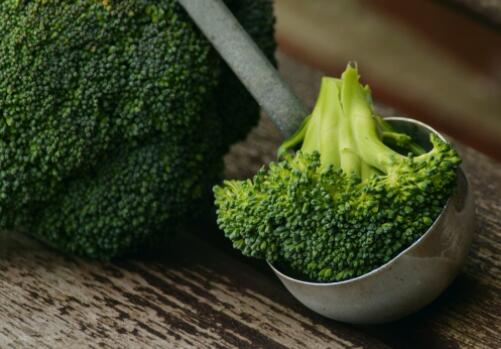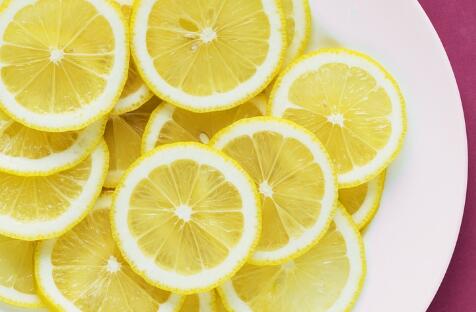When will the perennial herb banana taro be planted? When will you collect it? How is the planting benefit? How do you plant it?
Banana taro, also known as ginger taro, banana taro, banana root, banana bud, banana bud and fragrant bead, is a common traditional Chinese medicine in most parts of our country. It is widely planted because of its wide range of uses, including ornamental, edible, medicinal, feeding and brewing. When will the banana taro be planted? When will you collect it? How is the planting benefit? How do you plant it?

Planting time:
It is generally planted from February to April in spring when the temperature is stable above 12-14 ℃.
Harvest time:
From mid to late November to December, the first frost appeared when the temperature dropped obviously. when withered bananas appeared above ground, the stems and leaves were cut off, the roots were dug out, and the fibrous roots were removed and processed after washing. In case of frosty weather, it should be harvested before frost. The fresh taro that leaves seed should choose the banana taro with no damage, no disease and insect, full and strong bud, strong vitality, a single weight of 50g and 150g, which can be directly buried with soil, or can be spread out for 4 days and buried with soil, covered with banana stem and leaf, rice straw or other hay, covered with film before frost and snow frost injury, and when the temperature rises in spring, the tuber will germinate and grow into seedlings.
Benefit analysis:
Planting banana taro is simple and extensive, less investment and quick effect, so it is a quick way to get rich. In 2017, Quxi Village, Quxi Township, Liancheng County, planted more than 70hm2, produced fresh taro 45~90t/hm2, the purchase price of fresh taro was 1.01.2 yuan / kg, and the output value of fresh taro was 45000 ~ 90000 yuan / hm2. Processing and extracting starch, starch 15~16kg is produced per 100kg fresh taro, the market price is 1214 yuan / kg, and the output value is between 90000 yuan / hm2 and 165000 yuan / hm2, which is deeply loved by farmers.
Utilization value:
The main results are as follows: 1. Banana taro has luxuriant stems and leaves, the leaves are not easy to scorch, the leaf viewing period is long, and the management is simple, so it is a good material to beautify the courtyard. Its rhizomatous tuber tastes sweet, light and cool, with the effect of clearing heat and dampness, calming the nerves and reducing blood pressure, and its roots and flowers can also be used as medicine; tubers are rich in starch and can be cooked or extracted, so they are excellent raw materials for starch processing.
2. Canna starch has the advantages of large particle size, low gelatinization temperature, good paste transparency, high amylose content, good film forming ability, high molecular weight and good application properties. it is a new raw material source of high value starch. Starch can directly process vermicelli, noodles and other food and food ingredients, and can also be used in the production of monosodium glutamate, wine, oral and injection glucose, sorghum sugar and other starch sugars, as well as a variety of non-staple foods such as lotus root powder.
3. In the textile industry, banana starch sizing yarn has higher adhesion and better finish than grain starch sizing yarn, and banana starch and stem and leaf fiber can also be used in feed, papermaking, shoemaking, hat making, clothing and cultural goods.
4. Banana taro dregs, stems and leaves can be used as breeding feed to promote the development of aquaculture. The application and market prospect of banana taro are broad.
High yield cultivation techniques:
1. Land selection and preparation
The banana potato has strong adaptability to the soil, likes the moist and fertile deep soil, is more resistant to drought and waterlogging, and should choose the land with sufficient sunshine, sunny shelter and good drainage. It can be planted in most parts of southern China regardless of altitude. The gentle slope sandy loam soil with deep soil layer, loose and fertile soil, good drainage, pH neutral partial acid and rich organic matter and humus is the best, and it is also suitable to grow in fertile clayey soil. It can be planted in large areas of rice fields, hillsides and remote plots, or scattered in front and behind houses, hillside ditches and other fields.
After selecting suitable plots for high yield cultivation, ploughing in winter should be carried out to promote soil ripening and fragmentation. In spring, combined with soil preparation and border application, calcium magnesium phosphate fertilizer 1500kg/hm2 and organic fertilizer 30t/hm2 were used as base fertilizer. The soil preparation should be ploughed deeply and carefully, the soil is broken and the mud is flat, and the fertilizer is uniform and does not reveal the soil surface. It is suitable to make high border, border height above 30cm, single-row planting border width 70cm, double-row planting border width 110cm, groove width 30cm, and open drainage ditches around to prevent stagnant water.
2. Seed and seedling selection and treatment
Tuber propagation is mostly used in production, and the seed taro is buried with soil and covered with rice straw during harvest last autumn and winter to keep warm and prevent freezing. When the temperature rises in spring and the tuber sprouts out 2-4 leaves, strong seedlings with strong growth and free of diseases and insect pests are selected to be transplanted into the field. After seedling emergence, taro seedlings 5~10min can be soaked in carbendazim 800x solution to improve disease resistance.
3. Planting density
Planting row distance 60~70cm, high border cultivation or burrowing cultivation, the planting density is 15000 to 19500 plants / hm2. When planting on the edge of the field, in front of the house and behind the house, we should pay attention to apply more rotten organic fertilizer as base fertilizer and pour enough water after planting.
4. Cultivate the soil by ploughing.
In the early stage of growth, weeds should be removed in time to prevent weeds from competing with banana for nutrients and space. During the whole growing period, the soil should be cultivated for 2 or 3 times, and the soil of the border ditch should be cultivated on the border surface, which is beneficial to the growth of banana taro. When ploughing and cultivating soil, according to the growth characteristics of the underground stem of banana taro, it was deep in the early stage and shallow in the later stage, which accelerated the division and expansion of the root tuber and prevented lodging.
5. Rational fertilization
Fertilizer application is the key measure for high yield of banana taro. On the basis of applying sufficient base fertilizer, it is necessary to apply fertilizer reasonably. 45% potassium sulfate compound fertilizer 75~150kg/hm2 was applied at seedling stage, 45% potassium sulfate compound fertilizer 450~750kg/hm2 was applied in the middle stage and 45% potassium sulfate compound fertilizer 450~750kg/hm2 was applied in the middle stage, phosphorus and potassium fertilizer was mainly applied in the later stage, nitrogen fertilizer was avoided; potassium sulfate 225~450kg/hm2, calcium superphosphate 750kg/hm2, or 45% potassium sulfate compound fertilizer 750~900kg/hm2 were applied before flowering. When fertilizing, fertilizer should be applied evenly on the left and right sides of the root to facilitate the full absorption of nutrients and plant balance 3.3.4 scientific water management. Banana taro needs more water during the growing period, but it has strong drought tolerance and avoid waterlogging, and the stagnant water in the field can easily lead to rotten roots and dead seedlings. The principle of water pipe is to water once every 15 to 20 days during drought, watering in time after fertilization, no irrigation and soaking, drainage and waterlogging prevention in rainy season.
6. Cut flowers
In order to avoid nutrient consumption, the flowers should be cut off in time when the banana taro blossoms, so that nutrients can concentrate on the growth of the underground stem and increase the yield.
7. Pest control
Banana has strong resistance to diseases and insect pests, and there are few diseases and insect pests, such as banana plague, bud rot and stem rot. Banana plague can be controlled by carbendazim and topiramate, and bud rot and stem rot can be controlled by chlorothalonil and Fuhuo No.1. Aphids sometimes occur in the early and middle stages, and pesticides such as dimethoate and imidacloprid can be used to control them.
Time: 2019-04-08 Click:
- Prev

Which varieties can be chosen for broccoli cultivation in summer? How to raise seedlings and plant? What are the pest control techniques?
Broccoli is also known as broccoli, Italian cauliflower, Italian kale, cauliflower, green cauliflower, cauliflower, broccoli. And the cultivation is easy, the supply period is long, and has a bright future. Which varieties can you choose to grow broccoli in summer? How to raise seedlings and plant? What are the pest control techniques? Variety selection
- Next

Is lemon the nemesis of scurvy acidic or alkaline food? Does drinking lemonade turn black during the day? Can it be whitened?
Summer is the season when a large number of lemons are on the market. Many people like to buy fresh lemons and go home to make lemonade, which is healthy and affordable. Lemons contain high levels of vitamin C and are generally used as beauty food. Is lemon acidic or alkaline? Does drinking lemonade turn black during the day? Citrus plants of Lemon Rutaceae
Related
- Fuxing push coffee new agricultural production and marketing class: lack of small-scale processing plants
- Jujube rice field leisure farm deep ploughing Yilan for five years to create a space for organic food and play
- Nongyu Farm-A trial of organic papaya for brave women with advanced technology
- Four points for attention in the prevention and control of diseases and insect pests of edible fungi
- How to add nutrient solution to Edible Fungi
- Is there any good way to control edible fungus mites?
- Open Inoculation Technology of Edible Fungi
- Is there any clever way to use fertilizer for edible fungus in winter?
- What agents are used to kill the pathogens of edible fungi in the mushroom shed?
- Rapid drying of Edible Fungi

